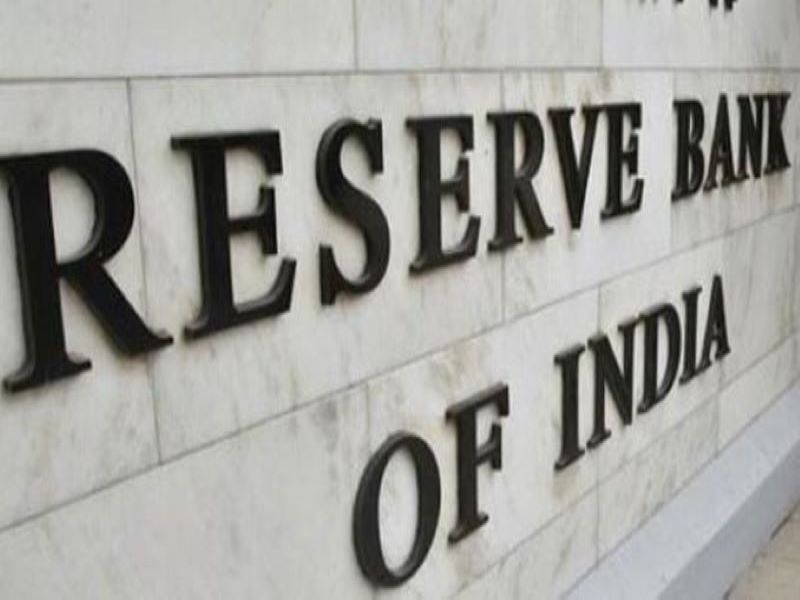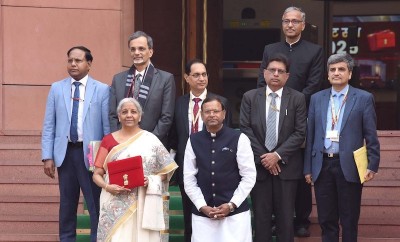 RBI | Monetary Policy
RBI | Monetary Policy
Experts laud RBI's move to address inflationary pressures while balancing growth
Mumbai: The Reserve Bank of India (RBI) on Friday kept the benchmark interest rate unchanged at four percent for the 11th time in a row as it continues to maintain its accommodative stance in the backdrop of rising inflation.
The Monetary Policy Committee, which met from Apr 6-8 for the first time in the financial year 2022-23, has unanimously decided to keep the benchmark lending rates unchanged at four percent, RBI Governor Shaktikanta Das said while announcing the bi-monthly monetary policy.
The reverse repo rate also continues to remain unchanged at 3.35%.
Siddhartha Sanyal, Chief Economist and Head of Research, Bandhan Bank said that RBI’s decision to retain the accommodative stance while articulating a focus on the gradual withdrawal of accommodation was warranted.
At a time when inflation is rising and geopolitical tensions are leading to volatility in global markets and keeping energy and commodity prices elevated, the RBI has been bold and upfront in recognizing the risks to growth and inflation in FY23.
The GDP growth projection for FY23 has been reduced by 60 bps and the inflation estimate has been raised by a sharp 120 bps.
It is important to note that monetary policy typically takes effect with a lag. As per the RBI’s latest projection, inflation is estimated to average at around 5.25% in H2FY23, as against the earlier expectation of around 4%.
While this doesn’t call for a kneejerk reaction at the moment, if the inflation projection for H2FY23 needs to be revised upwards, rather than downwards, going forward, it might lead the central bank to raise the Repo Rate earlier than what was earlier expected.
While the Reverse Repo rate was left unchanged today, introduction of SDF at a rate at 3.75%, effectively moves the floor of the LAF corridor higher.
However, this shouldn’t lead to any fresh immediate upward pressure on near term rates as the latter already settled above the SDF rate as the RBI focused more on VRRR in recent months.
Also, this move may not trigger any major surprise as the possibility of restoring the usual width of the LAF corridor had been well telegraphed by the central bank.
RBL Bank Chief Economist Rajni Thakur noted that RBI has continued with its exemplary act of balancing the contrasting pulls of its key objectives: price stability, growth support and easy financial conditions.
"While the key policy rates remain unchanged, restoration of LAF corridor to 25 bps below and above Repo rate, has effectively pushed up the short term rates by 40-50 bps," Thakur said.
Similarly, while the monetary policy stance continues to be ‘accommodative’, the accompanying statement mentions its focus on ‘withdrawal of accommodation’ to match up with rising price pressures.
Combined with substantial upwards revision of inflation forecasts for the current fiscal year to 5.7%, RBI has, to a large extent, re-aligned its policy to evolving market conditions and also signalled rate hikes over the year.
Given the current macro-dynamics, MPC announcements were a tight rope walk that has delivered on re-calibrating growth-inflation projections, signalling impending hikes and still buying time to hike lending rates, she said.
"With multiple risks on both inflation and growth trajectory in the current fiscal year, we expect two reluctant rate hikes, most likely starting in the second quarter.
"Combined with gradual and calibrated liquidity withdrawal, we nevertheless, expect financing conditions to still remain easy over the full year, to support economic activities,” she opined.
Post the policy announcement today HDFC Bank Chief Economist Abheek Barua said, "The RBI has responded to both the new inflation and growth challenges that have emerged due to geopolitical tensions that have manifested themselves in rising commodity prices."
While the RBI kept its monetary policy stance unchanged, it restored the policy corridor to pre-pandemic levels and provided a commitment toward a slow reduction of liquidity going forward, he said.
"This is clearly a hawkish policy as compared to the February meeting, justified by the inflationary pressures that have emerged over the past month. The upward inflation forecast revision by 120bps to 5.7% for FY23 seems sensible given the broad-based nature of price increases," he opined.
Despite the increase in HTM limits, bond yields are likely to go up given the sheer size of the borrowing program for FY23. We expect the 10 years to rise to 7-7.25% in H1 FY23, he added.
J Sagar Associates (JSA) Partner Soumitra Majumdar said “The RBI statement reflects cautious optimism – focus on ensuring robust recovery before accelerating growth levers.
The accommodative policy stance should nurture the credit markets – though the hint of a calibrated withdrawal may add a dash of uncertainty.
Continued government borrowings should be directed towards delivering the infrastructure development promises of the government – this will certainly bolster the investment sentiment for India.
Policy thrust on climate change risks and its criticality on sustainable financing – important development to be closely watched. The policy also provides adequate push for fintechs – both in terms of deepening the market and for enhancing security, Majumdar said.
Welcoming the RBI's decision to maintain the accommodative policy Repo rate of four percent, ASSOCHAM today said, the Monetary Policy Committee has struck a fine balance with a nuanced approach to encourage growth while calibrating inflationary pressures and defend the Indian economy by navigating the current geopolitical storm with a resolute response.
''The best thing about the Credit Policy review by the MPC is that the RBI is continuously trying various monetary tools to face the unfolding global challenges of elevated commodity and crude prices to limit the inflationary impact on the Indian economy without giving any jerk to a growth trajectory which is on a steady upward move,'' ASSOCHAM Secretary General Deepak Sood.
The ASSOCHAM Secretary-General said RBI's latest growth projection of 7.2 percent and inflation forecast of 5.7 percent for the current financial year has to be understood in the backdrop of uncertainty in the global economy and a continuing Ukraine-Russia war disrupting the supply chain.
So far, India has managed the fast-evolving situation with a lot of maturity, courage, and policy support.
The ASSOCHAM Secretary General said RBI's latest growth projection of 7.2 percent and inflation forecast of 5.7 percent for the current financial year have to be understood in the backdrop of uncertainty in the global economy and a continuing Ukraine-Russia war disrupting the supply chain. So far, India has managed the fast-evolving situation with a lot of maturity, courage and policy support.
Support Our Journalism
We cannot do without you.. your contribution supports unbiased journalism
IBNS is not driven by any ism- not wokeism, not racism, not skewed secularism, not hyper right-wing or left liberal ideals, nor by any hardline religious beliefs or hyper nationalism. We want to serve you good old objective news, as they are. We do not judge or preach. We let people decide for themselves. We only try to present factual and well-sourced news.







